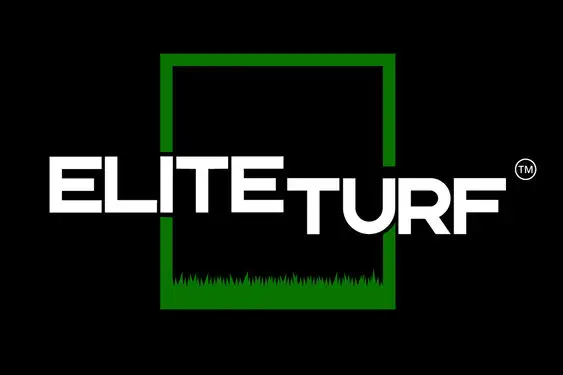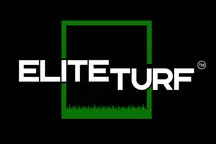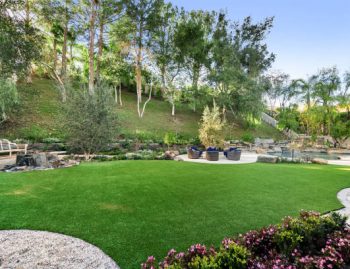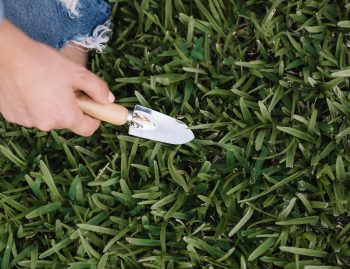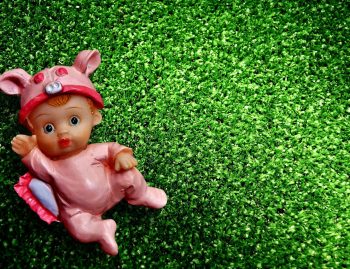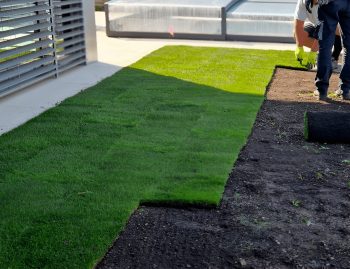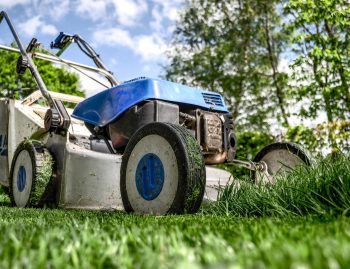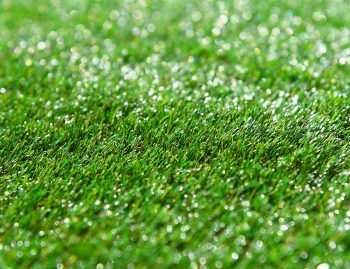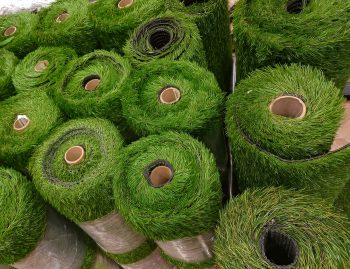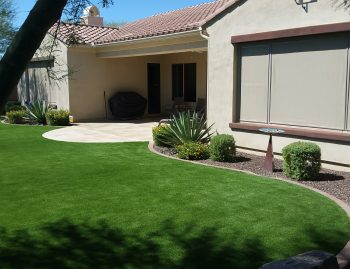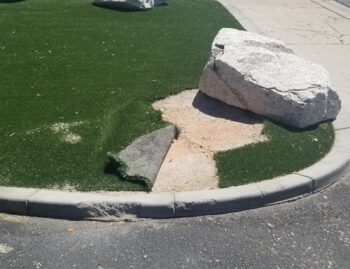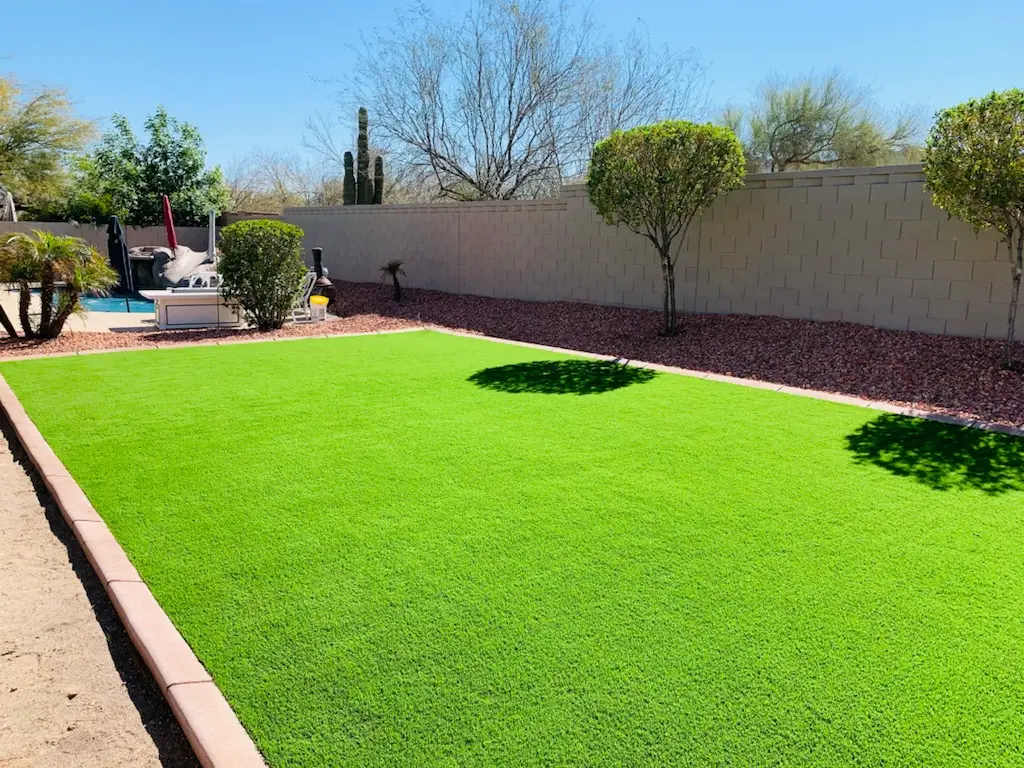
Artificial grass is no longer confined to sports stadiums. It’s now becoming a popular choice for front and backyards across the U.S. But what’s all the buzz about artificial turf?
If you haven’t yet seen a high-quality, professionally installed turf lawn, you might imagine something reminiscent of the outdated, obviously fake grass from shows like The Brady Bunch. However, artificial turf has evolved significantly since the ’60s. With advancements in technology, today’s turf products look and feel so realistic that it’s hard to distinguish them from natural grass!
One of the biggest advantages of synthetic grass is its longevity. A well-installed turf lawn can last anywhere from 15 to 20 years. When you combine this with the minimal maintenance required and the ability to withstand heavy wear, it’s easy to see why more homeowners and businesses are opting for artificial turf.
Let’s dive into the costs, durability, and key considerations to help you decide if an artificial lawn is right for your home.
The Cost of Artificial Grass
Naturally, cost is a major factor for anyone considering an artificial lawn. While the upfront expense might seem steep, it’s important to remember that artificial turf pays for itself over time. You’ll save on the ongoing costs of maintaining a natural lawn—no more mowing, watering, or fertilizing. Plus, think of all the time you’ll save if you’ve been doing the yard work yourself!
As mentioned earlier, artificial turf can last as long as 20 years, though some estimates suggest a minimum of 8 years. So, why the difference? Several factors can impact the durability and lifespan of synthetic turf:
- Quality of Materials: The higher the quality of the turf, the longer it will last. As the saying goes, “You get what you pay for.” In regions like Glendale, it’s especially important to choose top-quality turf that can withstand intense heat and sun exposure.
- Proper Installation: While it may be tempting to save money by installing artificial grass yourself, the process is far more complex than simply laying down some faux grass. Poor installation can lead to misaligned seams, weed growth, and drainage problems, all of which can shorten the lifespan of your turf.
- Regular Upkeep: You might be thinking, “But isn’t artificial turf supposed to be maintenance-free?” While it’s true that synthetic lawns require much less upkeep than natural grass, occasional care is still necessary. Raking high-traffic areas to prevent infill compaction, rinsing off dirt and debris, and cleaning up after pets will help keep your turf looking its best.
- Wear and Tear: Over time, rips or stains may occur. The good news is that these can be easily repaired without replacing the entire lawn. However, higher-quality turf is more resistant to damage, making it a better investment in the long run.
Now that we’ve covered the main factors affecting cost and longevity, let’s explore why artificial turf lasts so long.
The Durability of Artificial Grass: Why It Lasts So Long
The impressive longevity of artificial turf comes down to the materials used and the way they are constructed. Most synthetic turf is made from a combination of polypropylene, polyethylene, and nylon. The grass blades themselves are usually made from nylon or polyethylene, with the latter being heated down with dyes and UV-resistant additives. Nylon blades are created using molds, giving them a realistic look and shape, while polypropylene is often used for the thatch layer, providing extra cushion and support.
These materials are chosen for their durability—they don’t degrade quickly, even under harsh weather conditions or heavy foot traffic. They are also stain-resistant, fade-resistant, and water-resistant, all of which contribute to the turf’s longevity.
Infill plays a crucial role in extending the life of artificial lawns. For residential installations, sand, silicon mixtures, and pea gravel are typically used as infill, as these materials don’t retain heat like the rubber infill used in commercial applications. This helps keep the turf cooler and prolongs its lifespan.
In summary, artificial turf lasts so long due to the durable materials used in its construction and the meticulous manufacturing process. Treated to be UV-stabilized and water-resistant, synthetic grass is built to resist fading, flattening, and degradation over time.
Is Artificial Turf Right for Your Glendale Home?
Like any home improvement decision, opting for an artificial lawn comes with its pros and cons. While the benefits are numerous, it’s important to weigh them against any potential drawbacks to determine if synthetic sod is the best choice for your property.
Pros of Artificial Turf
- Minimal Maintenance: Compared to the weekly tasks of mowing, watering, and fertilizing natural grass, the occasional rake and rinse of artificial turf seem like a breeze.
- Cost-Effective: Although the initial investment is higher, artificial lawns pay for themselves over time. Plus, think of the ongoing savings in maintenance and water costs!
- Year-Round Greenery: With artificial turf, you’ll never have to worry about brown patches or dead spots. Enjoy a lush, green lawn all year long.
- Improved Irrigation: Although artificial turf is water-resistant, it’s also permeable. Proper drainage is addressed during installation, so you won’t have to deal with standing water in your yard.
- Resource Conservation: Water shortages are a growing concern, especially in western states. With artificial turf, you can contribute to water conservation efforts without sacrificing a beautiful lawn.
- Non-Toxic and Hypoallergenic: Artificial turf is a safe option for homes with kids, pets, or individuals with grass allergies.
Cons of Artificial Turf
- Warmer Surface Temperature: Even with modern treatments, artificial turf can get warmer than natural grass, especially in direct sunlight. The type of infill used can also impact this.
- Odor Build-Up: Some types of infill are more prone to holding odors. Prompt cleanup of pet waste is essential to prevent unpleasant smells.
Conclusion: Is Artificial Turf Worth the Investment?
Many homeowners wonder what makes artificial turf so durable and long-lasting. The answer lies in the high-quality materials, advanced manufacturing processes, and special treatments that protect the turf from environmental factors. However, other factors like the quality of the turf, installation, traffic, and upkeep also play a role in determining how long your synthetic lawn will last.
While the estimated lifespan of artificial turf can vary depending on these factors, you can generally expect a well-maintained synthetic lawn to last anywhere from 8 to 10 years. With top-quality turf and proper care, it’s not uncommon for artificial lawns to last 15 to 20 years. No matter how you look at it, investing in a quality synthetic turf lawn is a smart move that will provide years of enjoyment.
Ready to Make the Switch to Artificial Turf?
If you’re considering transforming your yard with artificial turf, the experts at Elite Turf are here to help! Our non-toxic, heat-resistant, 100% USA-made turf products ensure you get a quality lawn that will stand the test of time.
Call us today at (602) 456-0752 or visit our website at www.eliteturfaz.com to get started on creating the yard of your dreams.
Looking for inspiration? Check out some of our recent projects in Phoenix, Paradise Valley, Peoria, and Scottsdale to see what’s possible with Elite Turf!
